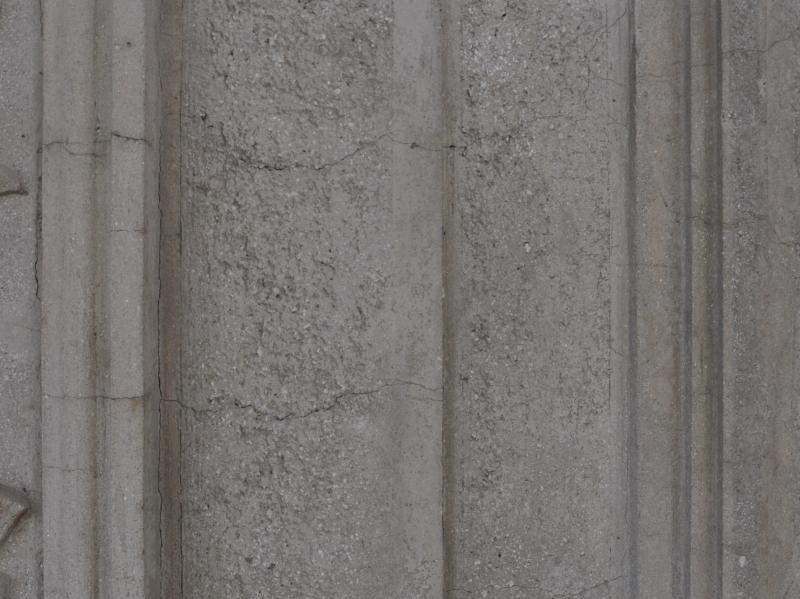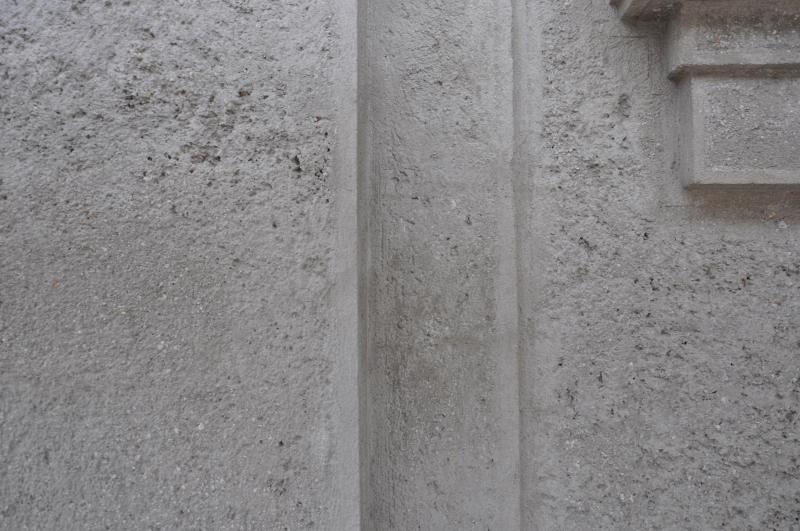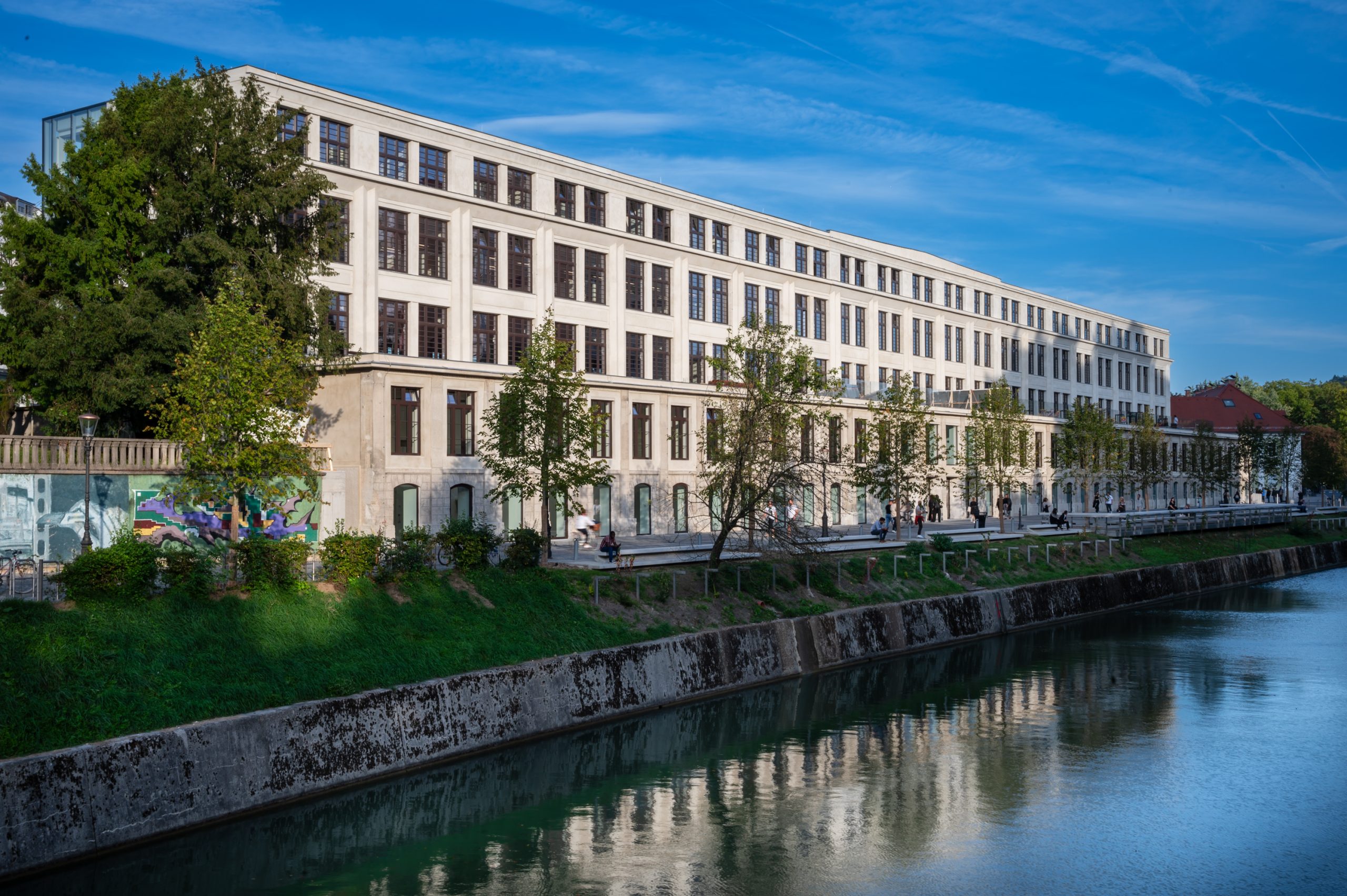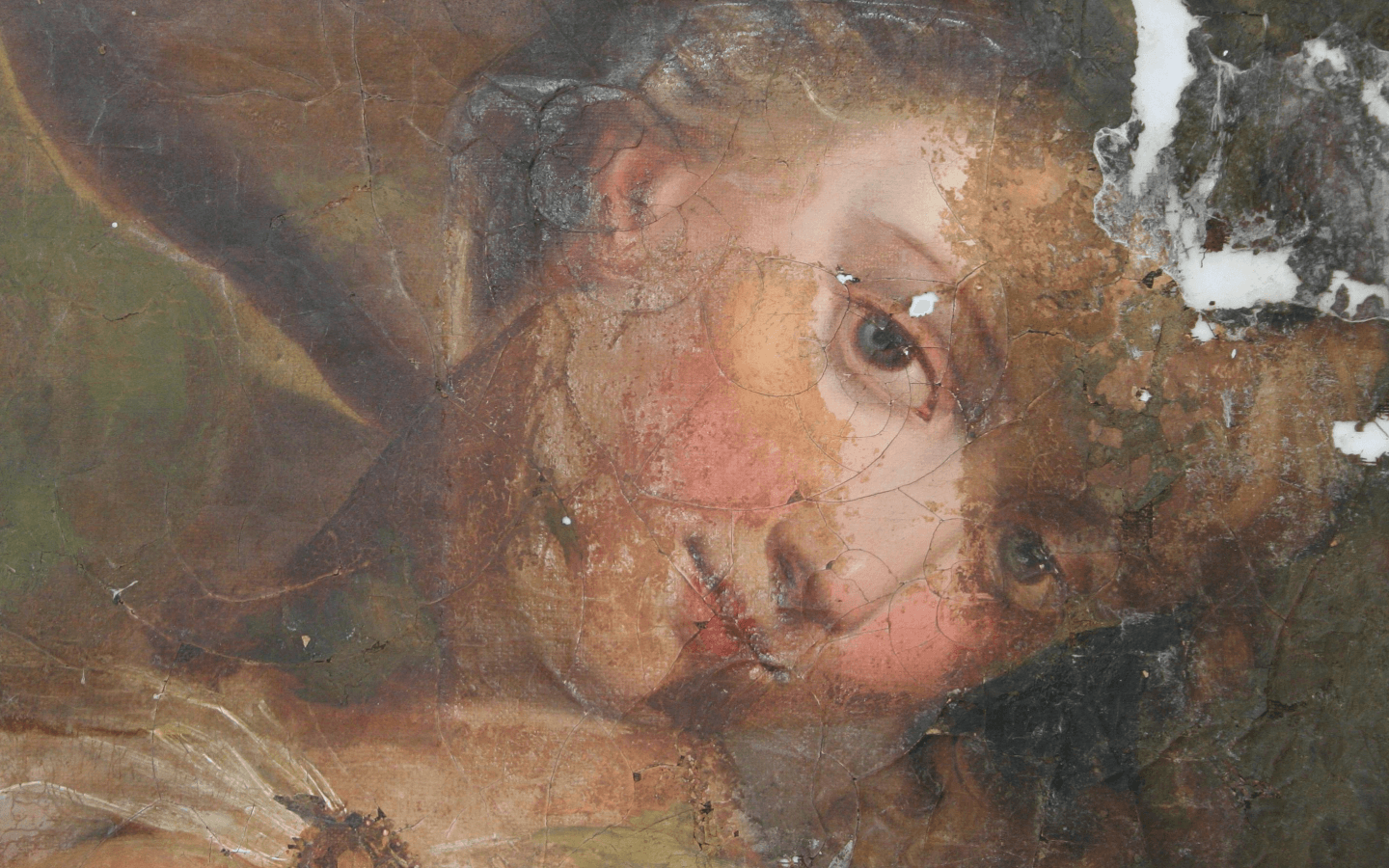The restoration of the street façade of the 1920s business and residential palace of the branch of the First Croatian House in Zagreb at 7 Beethovnov Street/Cankarjeva Street 8 in Ljubljana, with its Late Art Nouveau façade, presented a major challenge to the conservation profession.
Text by Tatjana Adamič
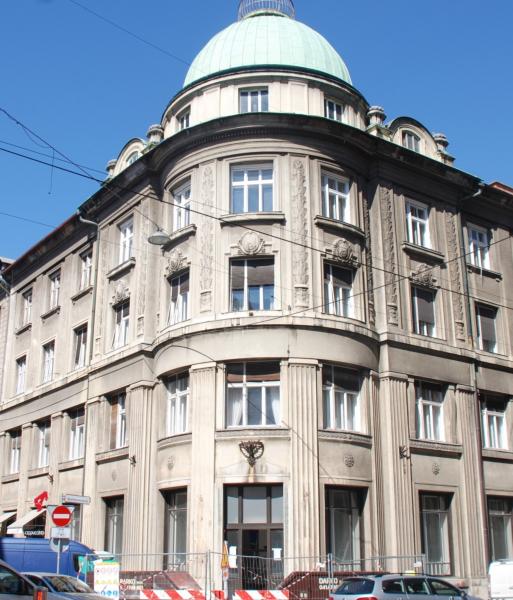
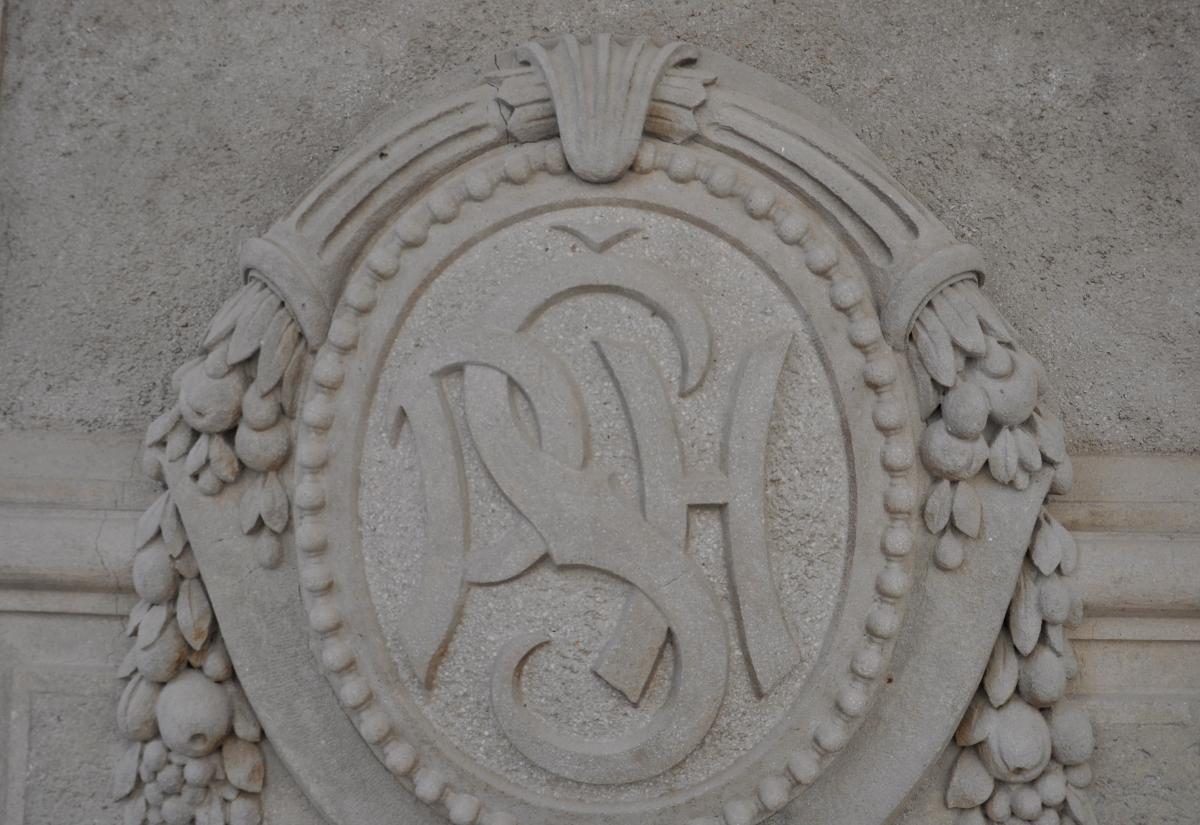
Preliminary research
The façade is made of artificial stone on the high ground floor and the first floor, while the surface on the upper floors is rough plaster. The pineapple motif and the rosettes and emblems of the Croatian Savings Bank were cast in a related material. Due to the peculiar rough plaster with smoothed edges, the ZVKDS, OE Ljubljana, requested a study of the composition and surface treatment of the façade materials in the cultural protection conditions.
The results of the analysis of the materials, which was carried out by experts from the Laboratory for Cements, Mortars and Ceramics at the Building Research Institute of Slovenia and facilitated by the Municipality of Ljubljana, provided detailed results on the composition of the cement mortars used. The façade was made of cement plaster or concrete with aggregate made of dolomite crushed stone, using pure grey Portland cement as the binder. It is characteristic of façades in the period between the two wars that cementitious materials began to be used to achieve an appearance similar to that of natural stone.
Facade cleaning
coated with dark cladding. Given the strength of the original materials and their good preservation, and based on sample tests, we decided to clean the façade by sandblasting with a soft medium (Ibix Art Garnet extra fine). The cleaning result was excellent and the impact on the preserved material substance was minimal.
After cleaning, the façade was found to be riddled with thin cracks. The conservator-restorer filled these in with a colour-matched cement mortar and treated the surface so that the repair of the cracks on the façade is not detectable. Due to the good preservation and strength of the façade materials, no additional surface protection was necessary.
